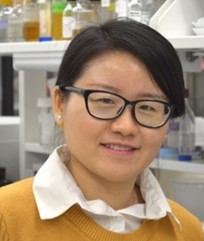Ning Zhang: Plant Physiology First Author

 Ning Zhang, first author of “Loss of function of the bHLH transcription factor Nrd1 in tomato enhances resistance to Pseudomonas syringae“
Ning Zhang, first author of “Loss of function of the bHLH transcription factor Nrd1 in tomato enhances resistance to Pseudomonas syringae“
Current Position: Postdoctoral Associate
Boyce Thompson Institute for Plant Research/Cornell University
Ithaca, NY, USA
Education: PhD in Horticulture and Crop Science at the Ohio State University, USA; Master in Silviculture at Zhejiang Agricultural and Forestry University, China; Bachelor in Landscape architecture at Shandong Agricultural University, China.
Non-scientific Interests: Playing puzzles and sudoku, watching movies, traveling
Brief bio: I studied Landscape Architecture as an undergraduate but became more interested in plant biotechnology and genetics. I changed my major to Silviculture during my Master’s study and gained extensive skills in plant tissue culture and transformation. In 2016, I earned my Ph.D at the Ohio State University working under the advisement of Dr. John Finer. My dissertation focused on the dissection of a group of strong soybean promoters, by studying how promoters, promoter elements, and intron sequences regulate the expression of target genes. One of the most interesting findings of my research is that precise modulation of gene expression can be achieved through modification of several nucleotides in the promoter region of target genes. This makes me enthusiastic about CRISPR technology for precise modification. In 2016, I joined Dr. Greg Martin’s lab as a postdoctoral researcher and lead a project that aims to develop tomato lines with CRISPR-mediated mutations in over 150 immunity-associated genes and characterize them for their responses to the bacterial pathogen Pseudomonas syringae pv. tomato (Pst). We have generated over 500 tomato mutant lines with mutations in hundreds of immunity-associated genes and published multiple papers regarding this project. One of the papers just got published in Plant Physiology, revealing that knocking out a bHLH transcription factor (Nrd1) in tomato leads to enhanced disease resistance to the bacterial pathogen Pseudomonas syringae.



